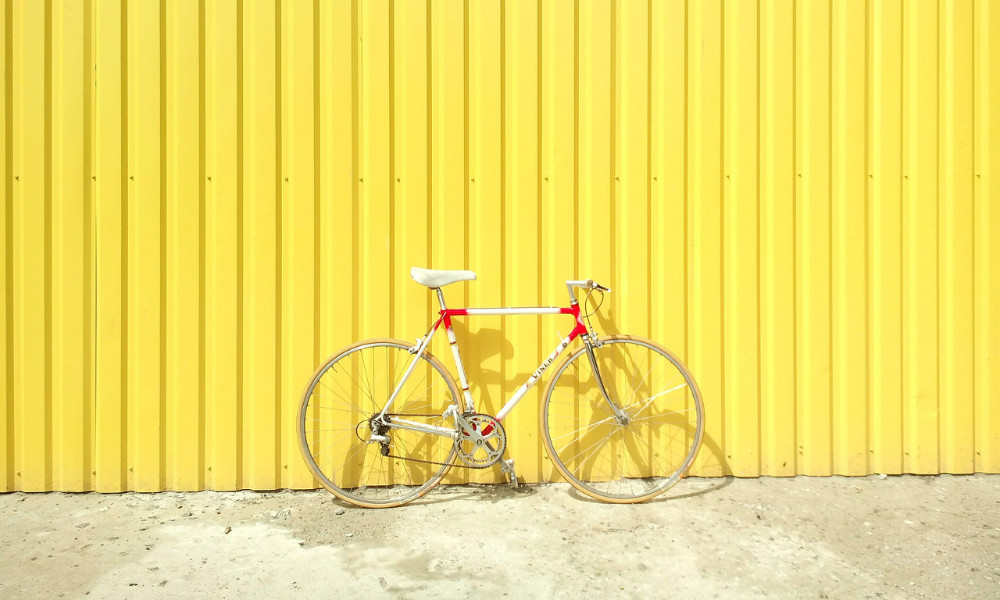Can you cut 1 Tonne of carbon pollution out of your life?
Take the challengeIf you're able-bodied and live within 10kms of your work place (or can catch public transport to a place within 10km of your workplace) then I can't recommend enough that you hop on your bike!
Why?
You'll be getting an extra hour or so of physical activity a day. The Guardian ran a piece earlier this year stating that the World Health Organisation's exercise recommendations are too low (five to seven time too low). So if you want to lower your chances of stroke, breast and bowel cancer, diabetes, or heart disease then a great way is to get pedalling!
Not only that, you'll start to see muscle definition and feel more energetic. That last point is a big one for me; going to work on an over packed train then walking into the office to spend 8 hours sitting down isn't ideal. But if I ride to work I feel more alert and ready to take on the day.
It's a win from an environmental perspective, too. We've estimated that walking or riding a bike just 5kms a week can save 52kgs of carbon emissions over the year.
If you want to start tracking your carbon savings in other areas of your life then you can take our free carbon challenge!

Choosing a trusty steed
When I first considered getting a bike I was looking at those old school cruisers that you often see roaming the street of Bondi beach. They're so beautiful and always come in colours like spearmint green. But the thing is; they're heavy and clunky. You'd be better off getting a lightweight road bike. You can still DIY to make it look gorgeous, but you'll be happy that you chose function over form in the long run.
Go into a bike shop and have a chat to the people behind the counter. Let them know your price range (you don't need to spend $2,000), what kind of riding you'll be doing and they should be able to help you out. While you're there get them to adjust the bike to your height, then take it for a test ride and make any further adjustments if it feels off.
If you're getting a bike second hand then see if anyone in your network that already does a bit of riding can come with you to make sure it's the right bike for you! A friend of mine once bought a bike off gumtree, tried to ride it to work, had a nightmare of a time, and later found out that it was way to small for her. It's a waste of time and money, and it's disheartening. Give yourself the best chance for success!
A note on cost: I used spend anywhere between $40 to $50 a week on public transport. I picked up a road bike for $450 (on sale). It's mid range, not too heavy, and does the job. Within nine weeks of riding it had paid for itself and I now had an extra $50 in my pocket each week. The outlay is expensive, but pays off in the long run. I also don't feel like I'm catching the Tokyo Yamanote line at peak hour anymore.
Safety first
Get the necessary safety equipment. Pick up lights for the front and back of your bike, and invest in a strip of reflective tape for your helmet. One of my biggest concerns for riding a bike was safety. So make yourself as visible as possible.
While we're on safety; always wear a helmet. Don't just rest it on your head, do up the buckle. This is a naff, but informative video about choosing the right helmet. More expensive doesn't necessarily mean safer. They're usually lighter, more aerodynamic, and just look a littler better.
Give it some love
Just like how you learnt to change a tyre and check the oil and water levels when you first got your licence, you need to learn to care for your bike. Learn how to patch a tyre, check the air pressure, change a tyre, etc etc. You can probably get them to run through this stuff when you first buy your bike, otherwise Google is your friend.
It's also worthwhile getting your bike regularly serviced. You can do this at the shop or seek out your local bike club; they're everywhere and will often help or give you skills for free!
Check the laws
Bike laws in every country will vary state to state. For example, in my state cyclists are allowed to ride in the bus or transit lanes, but heavy fines ($300+) have been introduced if you're caught running a red light. Know your rights then ride like a pro.
Map your journey
My office is in the city and my house is in the surrounding inner city suburbs. This means that the path covers lots of busy roads that had me feeling pretty unsafe. There are two things that I did to put myself at ease.
The first was to plan my journey. The route I take is actually a little longer (about 1km) than the one I would take if I were riding or driving, but it's mostly dedicated bike lanes or quieter streets. You can check this by heading to Google maps and select "cycling" as the transport mode, it'll show you which streets are bike friendly.
The next was to do a dry run. I rode to the my office one morning on the weekend. This meant I could familiarise myself with the route and work out how long it would take. There also wasn't as much traffic so it was a lot less stressful.
I noticed a stretch of about 100 meters that had me feeling really uneasy. It's busy, there's no bike lane, lots of buses and taxis, and it looked like a nightmare. So when I get to that bit I just hop of my bike and walk. It's no big deal, I feel safer and I highly doubt that people are driving past and judging me for walking for five minutes. I'm sure as I get better I'll feel more comfortable, or maybe I won't. No biggie, it's not a competition.
What to wear
If you're up early enough on the weekend it's likely that you will have come across a group of MAMILs (middle aged men in lycra). They have all the gear and are exclusively dressed in lycra. If that's your bag then you do you, but you might be interested to know about the impacts of synthetic fibers from your clothing washing down the drain into the oceans, and then being eaten up the food chain.

Image: Court Theatre
I ride in workout gear and bring a change of clothes with me in my backpack, if it's pretty cold (and not raining) then I can sometimes get away without changing.
If it is raining then you might want to check out our guide for riding your bike in the wet.
Just avoid loose pants that can get caught in your wheel (or pop a rubber band around them to keep everything in place).
If you want to look gorgeous and ride in a skirt then you can do the Penny In 'Yo Pants trick to avoid flashing and keep your skirt from ballooning out!
Other notes
Most cities or local councils run bike riding and maintenance workshops, they're often free, too!
Don't ride with headphones in. It's important to keep your wits about you be aware of your surroundings. You can't do this as effectively if you're singing along to your favourite jam (I can't anyway).
If you see someone driving erratically then avoid them; slow down, walk your bike on the footpath. Take a few minutes to ensure that you're safe.
Have a good time
I love that riding my bike opens me up to the smells and sights of my city. Spring has sprung in my part of the world and riding past a bush of star jasmine is just divine!
Once you've caught the bike bug you can start planning a trip to one of these 10 bike friendly cities.
Banner image: Unsplash
Read this next: Grow a bicycle from bamboo!
